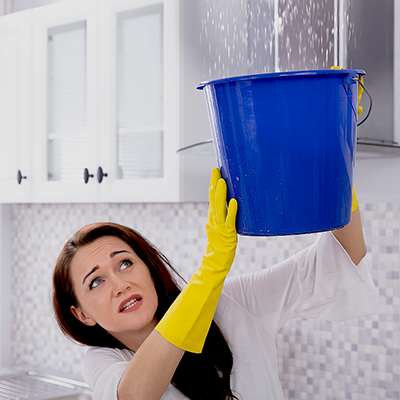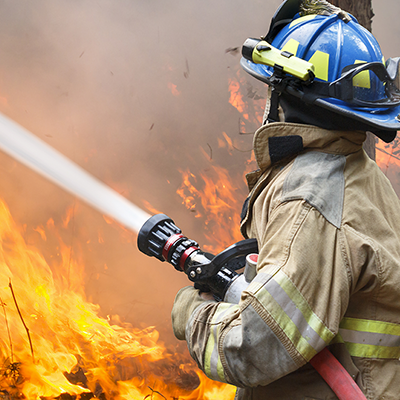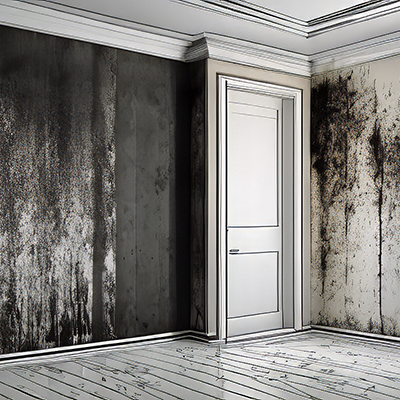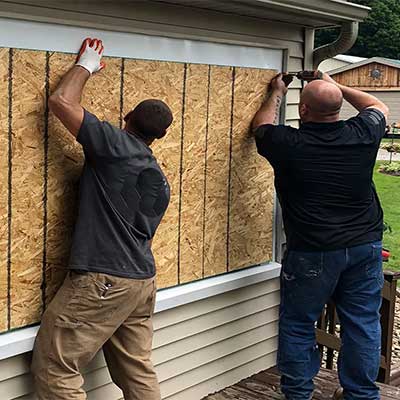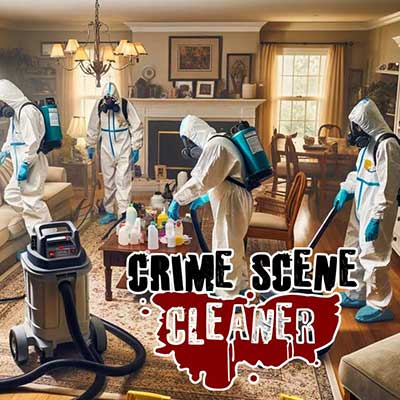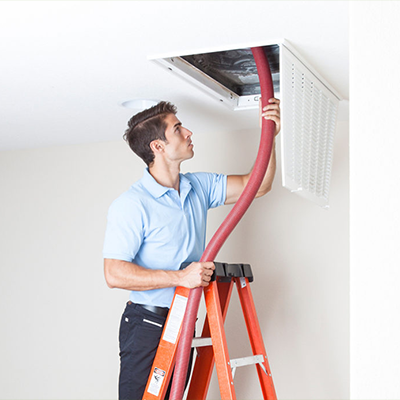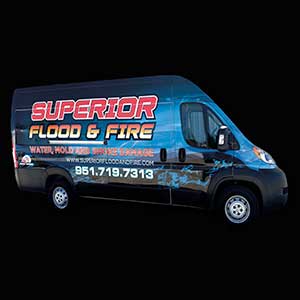
We’re here for you around the clock, ensuring that help is always within reach, especially during critical fire and flooding emergencies.

Our team’s experience spans both residential and commercial jobs, showcasing our ability to manage projects of any scale effectively.
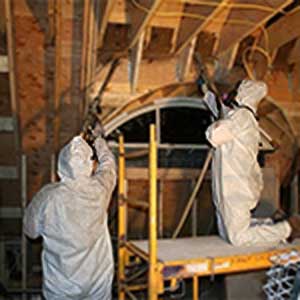
From water damage and fire & smoke damage to air duct cleaning and biohazard cleanup, we bring your property back to its pre-disaster state.
Superior Flood & Fire is reliable and thorough with insulation replacement to minimize your heating costs and keep your family comfortable.
Insulation is like a protective shield, preventing heat transfer between the interior and exterior of your home. Over time, insulation may deteriorate, become damaged, or lose its effectiveness. This can compromise your home’s thermal barrier, leading to energy loss, temperature imbalances, and increased utility bills.
Maximize Energy Efficiency by Replacing Insulation with Spray Foam Insulation
Spray Foam Insulation, Blown In Insulation, and Fiberglass Insulation
Are you experiencing discomfort in your home during extreme weather conditions, or are your energy bills skyrocketing? It may be time to consider Hemet insulation replacement. Insulation is vital in maintaining a comfortable indoor environment and improving energy efficiency. In this comprehensive guide, we will explore the benefits of insulation replacement, answer common questions, and provide valuable insights to help you make an informed decision. So, let’s dive in and discover how proper insulation can transform your home.
Types of Insulation Available
Several types of insulation are commonly used in buildings, each with advantages and disadvantages.
Here are some of the most common types of insulation:
- Fiberglass Insulation: Made from tiny glass fibers and often installed in batts or rolls. It’s relatively inexpensive and widely used.
- Cellulose Insulation: Made from recycled paper products, it’s environmentally friendly and can be blown into existing walls.
- Spray Foam Insulation: This type expands to fill gaps and can provide a high R-value per inch, making it very effective in insulating properties.
- Mineral Wool Insulation: Made from natural or recycled minerals, it’s water-resistant and can withstand high temperatures.
- Polystyrene Insulation: Available in two main types, expanded (EPS) and extruded (XPS), it’s moisture resistant and often used in foundations and walls.
- Reflective Insulation: Typically used in attics, it reflects heat instead of absorbing it.
- Radiant Barrier Insulation: Also used in attics, it reflects radiant heat and can help keep homes cooler.
Each type of insulation has its specific uses and benefits, so the best choice depends on factors such as the climate, building type, and budget.
In addition to the types of insulation mentioned above, there are a few other factors to consider when choosing the best insulation material for tight spots under the eaves. One option is rigid foam insulation, which can be cut to fit and provide a good barrier against heat transfer. Another option is blown-in insulation, such as cellulose or fiberglass, which can be easily installed in hard-to-reach areas. Consulting with a professional insulation contractor can help determine the most suitable material for your needs and ensure proper installation.
Why Insulation Replacement Matters
Insulation is like a protective shield, preventing heat transfer between the interior and exterior of your home. Over time, insulation may deteriorate, become damaged, or lose its effectiveness. This can compromise your home’s thermal barrier, leading to energy loss, temperature imbalances, and increased utility bills. By replacing your insulation, you can enjoy the following benefits:
- Enhanced Energy Efficiency: One of the primary reasons homeowners opt for insulation replacement is to improve energy efficiency. Aging or inadequate insulation can allow heat to escape during winter and enter during summer, making your HVAC system work harder to maintain a comfortable temperature. Upgrading to modern insulation materials with higher R-values can minimize heat transfer and reduce energy consumption, substantially saving utility bills.
2. Removal of Old Insulation
It must be removed if your existing insulation is damaged, contaminated, ineffective, or old insulation. This process ensures a clean slate for the installation of new insulation. During removal, special care should be taken to avoid spreading dust or contaminants throughout your home. Hiring an experienced insulation contractor can ensure safe and efficient removal.
3. Air Sealing
Before installing the new insulation, addressing any air leaks or gaps in your home’s envelope is essential. Air sealing involves sealing cracks, gaps, and openings in the walls, ceilings, and floors to prevent air leakage. This step helps maximize the effectiveness of your new insulation by minimizing heat transfer and improving energy efficiency.
4. Installation of New Insulation
Once the preparation is complete, it’s time to install the new insulation. Various insulation materials are available, including batt insulation, blown-in insulation, and spray foam insulation. The choice depends on factors such as your budget, desired R-value, and the areas of your home that require insulation. An experienced insulation contractor can guide you in selecting the most suitable material for each space.
5. Quality Control and Clean-Up
After the installation, a quality control check ensures that the insulation has been correctly installed and meets industry standards. The contractor will perform a thorough inspection to ensure all areas have been adequately insulated and address any potential issues. Finally, the clean-up process removes any debris or remnants of the old insulation, leaving your home clean and ready to enjoy the benefits of your new insulation.
The Importance of Replacing Insulation After a Fire
Fires can be devastating, causing immense damage to our homes and belongings. In addition to the apparent destruction, one often overlooked aspect is its impact on our insulation. Insulation is vital in maintaining our homes’ energy efficiency and comfort. After a fire, replacing the insulation to restore these essential qualities is crucial.
When a fire occurs, the intense heat can cause insulation materials to deteriorate. This can lead to a loss of their insulating properties, making it challenging to regulate the temperature inside the house. Furthermore, the smoke and soot from the fire can penetrate the insulation fibers, leaving behind a foul odor. By replacing the insulation, you can ensure your home remains energy-efficient, comfortable, and free from lingering smells.
Another reason to replace insulation after a fire is the potential health hazards it can pose. Smoke and soot can contain harmful chemicals and particles trapped within the insulation. These pollutants can irritate the respiratory system and cause health issues, especially for individuals with allergies or asthma. By replacing the insulation, you can create a healthier indoor environment for you and your family.
Additionally, fire damage can compromise the structural integrity of the insulation. The intense heat can cause the insulation to become brittle or even melt, creating gaps and voids in the coverage. This can lead to air leakage and reduced thermal efficiency. By replacing the insulation, you can restore the integrity of your home’s thermal envelope and prevent energy waste.
Risks of Not Replacing Insulation After a Fire
Choosing not to replace insulation after a fire can have serious consequences. One of the risks is the compromised energy efficiency of your home. Insulation is designed to slow heat transfer, keeping your home warm in winter and cool in summer. When the insulation is damaged, its ability to perform this function is significantly reduced. As a result, your HVAC system will have to work harder and consume more energy to maintain the desired temperature, leading to higher utility bills.
Another risk of not replacing insulation after a fire is the potential for mold growth. Moisture from the firefighting efforts can seep into the insulation, creating a damp environment conducive to mold growth. Mold can cause various health issues, including respiratory problems and allergies. By replacing the insulation, you can eliminate the risk of mold growth and ensure a healthy living environment.
Furthermore, not replacing insulation after a fire can impact the overall structural integrity of your home. Insulation helps to support the walls and ceilings, providing stability and preventing sagging. If the insulation is compromised or weakened, it can lead to structural issues over time. By replacing the insulation, you can maintain the structural integrity of your home and prevent costly repairs in the future.
Signs That Your Insulation Needs to Be Replaced After a Fire
After a fire, it is essential to assess the condition of your insulation to determine if it needs to be replaced. Here are some signs that indicate the need for insulation replacement:
- Visible damage: Insulation directly exposed to flames or intense heat will likely be visibly damaged. Look for signs of charring, melting, or disintegration.
- Odor: If your insulation has absorbed smoke and soot from the fire, it may emit a persistent, foul odor. This is a clear indicator that the insulation needs to be replaced.
- Moisture: If your insulation has been waterlogged due to firefighting efforts, it must be replaced. Wet insulation can lead to mold growth and compromise its insulating properties.
- Age: If your insulation is already old or nearing the end of its lifespan, a fire can further accelerate its deterioration. In such cases, it is advisable to replace the insulation to ensure optimal performance.
If you notice any of these signs, it is crucial to contact a professional insulation contractor to assess the situation and recommend the appropriate course of action.
Importance of Replacing Waterlogged Insulation
Water damage is joint during firefighting efforts and can harm insulation. When insulation becomes waterlogged, it loses its ability to trap and retain heat effectively. This can increase energy consumption and decrease comfort levels in your home. Therefore, it is essential to replace waterlogged insulation to restore its insulating properties and maintain energy efficiency.
Moreover, moist insulation is a breeding ground for mold and mildew. The damp environment created by the water can promote the growth of these harmful microorganisms, which can cause respiratory issues and allergies. By promptly replacing waterlogged insulation, you can prevent mold growth and ensure a healthy living environment.
When replacing waterlogged insulation, choosing the suitable material for the job is essential. Various insulation materials are available, each with advantages and disadvantages. Factors to consider when selecting insulation include the R-value (a measure of thermal resistance), moisture resistance, and fire resistance. Consulting with an insulation professional can help you determine the most suitable material.
The Process of Replacing Insulation After Water Damage
Replacing insulation after water damage requires a systematic approach to ensure thorough removal and proper installation. Here is a general outline of the process:
- Assessment: A professional insulation contractor will assess the extent of the water damage and determine the areas that need insulation replacement. They will also identify underlying issues like mold growth or structural damage.
- Removal: The damaged insulation will be carefully removed using appropriate tools and techniques. This step is crucial to prevent further contamination and ensure a clean slate for the new insulation.
- Drying: To prevent moisture-related issues, the affected area must be thoroughly dried before installing new insulation. This may involve using dehumidifiers, fans, or other drying techniques.
- Installation: The new insulation can be installed once the area is dry. The contractor will use the chosen material and follow industry best practices to ensure proper coverage and insulation effectiveness.
- Clean-up: After the installation, the area will be cleaned, and any debris or waste will be appropriately disposed of. This ensures a clean and safe living environment.
It is important to note that the process may vary depending on the specific circumstances and requirements of the situation. Hiring a professional insulation contractor ensures a smooth and successful insulation replacement process.
Why It Is Necessary to Replace Insulation After Rodent Infestation
Rodent infestation can wreak havoc on your insulation, leading to the need for replacement. When rodents such as rats or mice reside in your attic or crawl spaces, they can damage the insulation by nesting, chewing, and soiling it. Here are the key reasons why it is necessary to replace insulation after a rodent infestation:
- Hygiene: Rodents can carry various diseases and parasites that pose a health risk to humans. Their droppings and urine can contaminate the insulation, creating an unhygienic environment. By replacing the insulation, you can eliminate these health hazards.
- Structural damage: Rodents can cause structural damage to your home by gnawing on insulation, wiring, and other materials. This can compromise the integrity of your home and lead to costly repairs. Replacing the damaged insulation is essential to restore the structural soundness of your property.
- Odor removal: Rodents have a distinct and unpleasant odor. This odor can permeate your living space when they nest in the insulation. Replacing the insulation can eliminate the odor and improve indoor air quality.
To effectively replace insulation after a rodent infestation, following a comprehensive process that includes attic cleaning, disinfection, and deodorizing is essential. This ensures that all traces of rodent activity are wholly eradicated and your home is restored to a safe and healthy condition.
How to Choose the Right Insulation Material for Replacement
Choosing the right insulation material for replacement is crucial to ensure optimal performance and energy efficiency in your home. Here are some factors to consider when selecting insulation:
- R-value: The R-value measures the insulation’s ability to resist heat flow. Higher R-values indicate better insulation performance. Consider the climate in your area and choose insulation with an appropriate R-value to meet your energy efficiency goals.
- Moisture resistance: Since water damage can be a concern, it is essential to select insulation that is resistant to moisture. Look for materials with a low moisture absorption rate to prevent mold growth and maintain insulation effectiveness.
- Fire resistance: Fire safety is paramount, especially when replacing insulation after a fire. Choose insulation materials with a high fire resistance rating to minimize the risk of fire spread and enhance the safety of your home.
- Environmental impact: Consider the insulation material’s environmental impact. Look for options from recycled or sustainable materials with low volatile organic compound (VOC) emissions.
By considering these factors and consulting with insulation professionals, you can make an informed decision and choose the suitable insulation material for your home.
Common Concerns and Questions
Replacing your insulation can be a significant investment, and it’s natural to have questions and concerns. We’ve compiled answers to common queries to provide the information you need to make an informed decision.
1. Will replacing old blown-in insulation with batt insulation better insulate the house?
The choice between blown-in insulation and batt insulation depends on several factors, including your home’s needs. Blown-in insulation is often more effective at filling gaps and irregular spaces, providing better coverage. On the other hand, batt insulation is easier to install in open areas and offers better soundproofing capabilities. Consulting with an insulation professional can help determine the best option for your home.
2. Should I be careful when disturbing the existing blown-in insulation? Might the material be hazardous?
When handling any insulation material, taking the necessary precautions to protect your health is essential. While blown-in insulation is generally safe, wearing appropriate protective gear, such as gloves, goggles, and a mask, is advisable to minimize contact with the material. If you suspect the presence of pests or mold, it’s best to consult a professional insulation contractor who can safely remove and replace the insulation.
3. There are some tight spots under the eaves where the roofline meets the attic floor. Which material is best for getting good coverage over there?
In tight spots with limited access, spray foam insulation is often the best choice. Spray foam expands and adheres to the surrounding surfaces, providing excellent coverage and sealing gaps or cracks. Its ability to conform to irregular shapes makes it ideal for insulating areas with limited access, ensuring optimal thermal performance and energy efficiency.
4. Will the house be more or less dusty based on the type of insulation, or is that not a factor?
The type of insulation itself does not significantly impact the dust levels in your home. Dust is primarily influenced by air quality, ventilation, and regular cleaning. However, choosing insulation materials with air-sealing properties, such as spray foam insulation, can help reduce the infiltration of dust and other airborne particles, contributing to cleaner indoor air.
Trust the Experts at Superior Flood and Fire for Hemet Insulation Replacement
When replacing insulation, it is crucial to rely on experienced professionals who can provide high-quality service and ensure optimal results. A reputable insulation contractor will assess your needs, recommend the most suitable insulation materials, and perform a seamless installation. By investing in professional insulation replacement, you can experience the full range of benefits, including enhanced comfort, energy efficiency, and improved indoor air quality.
Don’t let inadequate insulation compromise your home’s efficiency and comfort. Contact Superior Flood and Fire Restoration today at (951) 719-7313 for a free evaluation and estimate. Our expert team is dedicated to providing top-notch insulation replacement services, ensuring your home is well-insulated and ready to withstand the challenges of every season. Experience the difference of superior insulation and start enjoying a more comfortable and energy-efficient home today!


